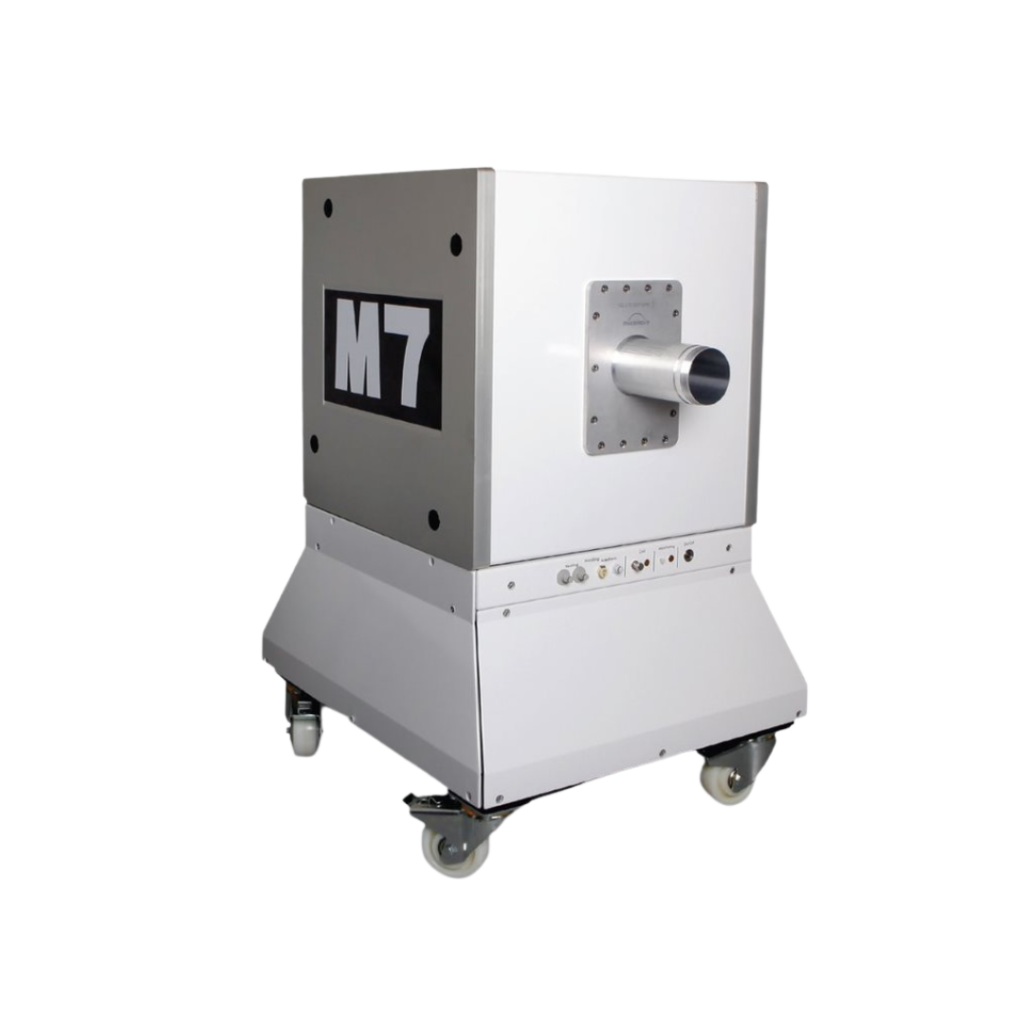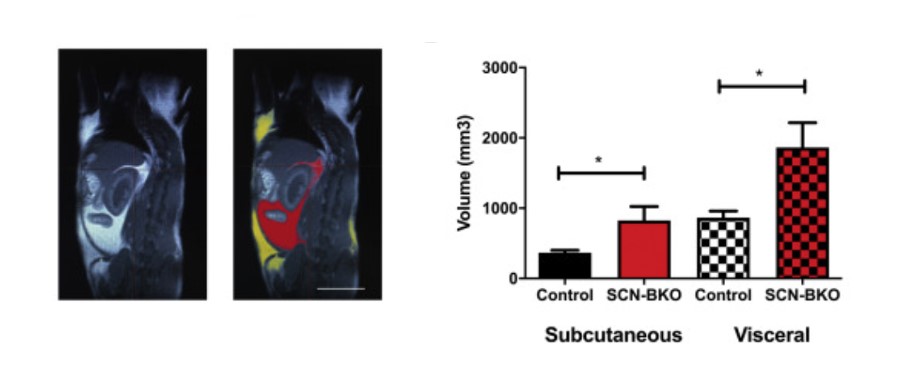System Used:
M-Series MRI

 Circadian Rhythms lead to the coordination of a multitude of physiological, behavioural, and metabolic processes to the natural 24-hour periodicity of the earth’s rotation. In this paper from 2019 published in Molecular Metabolism, researchers demonstrated the important of an overall synchronized circadian clock network to maintain metabolic homeostasis.
In mammals, many metabolic processes are dependent on the synchronization of circadian clocks, with a master pacemaker being located in the suprachiasmatic nucleus (SCN). Under normal conditions where mammals are subjected to a periodic light-dark schedule due to the earth’s rotation, the SCN coordinates with this cycle causing rhythmic variations in physiological functions and metabolic parameters. Disruptions in this temporal synchronicity of circadian rhythms, through effects such as altered sleep cycles and genetic modifications, have been shown to modulate metabolic function and promote various disorders such as obesity and impaired glucose utilization.
In the present study, researchers from the Institute of Neurobiology at the University of Lübeck in Germany have used SCN pacemaker knockout mice to determine the role of SCN clock function in metabolic homeostasis. SCN knockout mice (SCN-BKO) were compared with healthy control animals under conditions of normal light-dark schedules, and constant darkness. It was found that, in the absence of a healthy functioning SCN, animals on a regular temporal light-dark cycle were able to maintain normal metabolic and behavioural patterns, while those reduced to constant darkness could not. Control animals showed a mild effect in constant darkness, largely reduced from that of the SCN-BKO mice. Using the Aspect M-Series preclinical compact MRI system, researchers were able to show increased volume of subcutaneous and visceral adipose tissue in animals SCN-BKO mice when compared to controls after 10 weeks with controlled total food consumption. This study shows that under normal environmental conditions, the SCN pacemaker function may be unnecessary for metabolic regulation in mammals, but in altered conditions is essential for maintenance of homeostasis.
For more information about the Aspect M-Series line of preclinical MRI scanners or our bioluminescence systems please reach out to Scintica Instrumentation
Circadian Rhythms lead to the coordination of a multitude of physiological, behavioural, and metabolic processes to the natural 24-hour periodicity of the earth’s rotation. In this paper from 2019 published in Molecular Metabolism, researchers demonstrated the important of an overall synchronized circadian clock network to maintain metabolic homeostasis.
In mammals, many metabolic processes are dependent on the synchronization of circadian clocks, with a master pacemaker being located in the suprachiasmatic nucleus (SCN). Under normal conditions where mammals are subjected to a periodic light-dark schedule due to the earth’s rotation, the SCN coordinates with this cycle causing rhythmic variations in physiological functions and metabolic parameters. Disruptions in this temporal synchronicity of circadian rhythms, through effects such as altered sleep cycles and genetic modifications, have been shown to modulate metabolic function and promote various disorders such as obesity and impaired glucose utilization.
In the present study, researchers from the Institute of Neurobiology at the University of Lübeck in Germany have used SCN pacemaker knockout mice to determine the role of SCN clock function in metabolic homeostasis. SCN knockout mice (SCN-BKO) were compared with healthy control animals under conditions of normal light-dark schedules, and constant darkness. It was found that, in the absence of a healthy functioning SCN, animals on a regular temporal light-dark cycle were able to maintain normal metabolic and behavioural patterns, while those reduced to constant darkness could not. Control animals showed a mild effect in constant darkness, largely reduced from that of the SCN-BKO mice. Using the Aspect M-Series preclinical compact MRI system, researchers were able to show increased volume of subcutaneous and visceral adipose tissue in animals SCN-BKO mice when compared to controls after 10 weeks with controlled total food consumption. This study shows that under normal environmental conditions, the SCN pacemaker function may be unnecessary for metabolic regulation in mammals, but in altered conditions is essential for maintenance of homeostasis.
For more information about the Aspect M-Series line of preclinical MRI scanners or our bioluminescence systems please reach out to Scintica Instrumentation 